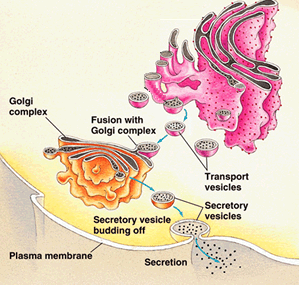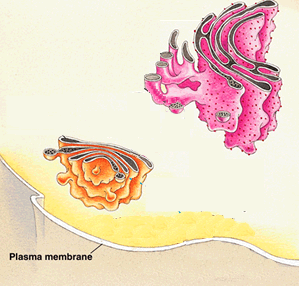Golgi apparatus
The Golgi apparatus is a structure within the cell devoted to processing the proteins synthesized in the endoplasmic reticulum. Some of these proteins will end up embedded in the cell membrane while others end up in lysosomes. Still other proteins are secreted from the cell, in a process called exocytosis, such as digestive enzymes.

